The pet begins to pee in different places in small portions. The urine is bright yellow in color, without a pungent smell. The process of urination does not cause pain. At the same time, the cat understands that he peed in the wrong place, so he tries to hide from the owner's anger.
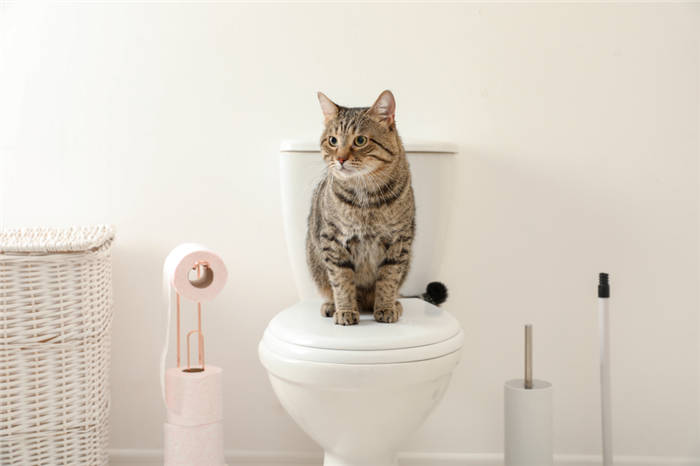
- How do I know that the kitty wants to pee if it is "talkative"?
- Peculiarities of defecation
- Leave a request for a cat lodging
- Possible problems and what to do?
- How to know if a kitten wants to pee: the first signs
- Kitten not going to the litter box – reasons
- How to tell if a cat is sick
- Kitten wants to pee – how to understand and signs
- How to know and determine when a cat wants to go to the bathroom?
- Certain signs
- Meowing
- Fidgety search for a nook
- The kitten spins around himself
- Kitten starts scratching with her paws
- Special time – after sleeping and eating
- When not to worry
- Causes of frequent cat urination
- Cystitis
- Urolithiasis
- How to understand that the kitten is constipated
- Accustoming the kitten to the litter box
How do I know that the kitty wants to pee if it is "talkative"?
Kitty "responds" to my questions, constantly "communicating", "saying" something. How can I tell if she wants to go to the bathroom without paying attention to her "talking"?
The intonation of her "speech" changes. Now she is not talking to you, but to herself. This is not hard to learn to understand if you practice a little. Secondly, she stops reacting to external stimuli: a toy, food, etc. Thirdly, she begins to "look for something", fussing with an anxious look, not coming to you at your call. Or hang around in one place.
When kitten wants to go to the bathroom he becomes restless, starts as if looking for something, meows a little higher than usual, fits in.
Just watch him, note the peculiarities of his behavior, and soon you will understand everything yourself. The main thing is to explain to your baby that there is a special place for these things. Usually 2-3 times is enough, especially if the kitten was brought up with the mother before 2-3 months.
Peculiarities of defecation
At the first time after birth, the kitten is not able to go to the toilet on its own. Its defecation is stimulated by the mother, who, by massaging the child's abdomen with her tongue, activates the defecation reflex. A small breed may defecate up to 10 times a day. The spontaneous reflex to urination and defecation in the kitten appears only at the age of three weeks. At this time the cat will go to the toilet about 4-6 times a day.
- A small kitten (under 21 weeks of age) will pee about 3 times a day and poop about 3-4 times;
- A 3-6 month old pet goes to the toilet 6-10 times and 2-3 times to the toilet;
- Pets older than 6 months urinate on average up to 5 times and poop 1-2 times a day.
Females and males go to the toilet differently. Males urinate more often. This is explained by the fact that the urinary tracts of males are narrower and longer than those of females. If a pet's diet is saturated with fiber, it will start to urinate more often.
Leave a request for a cat lodging
Possible problems and what to do?
A three-month-old kitten's defecation should not have extraneous impurities. Too frequent or liquid stools in a cat indicate the presence of abnormalities in the body. To get rid of a ticklish problem, you need to find out the cause of the diarrhea by analyzing the cat's stools. Yellow stools will indicate food poisoning in the pet. Feces with blood or mucus will indicate a worm infestation. Brown diarrhea is about allergies.
If liquid diarrhea is a one-time occurrence, you can put the kitten on a diet. It is recommended to follow it until the stools return to normal. You can give the pet a quarter tablet of activated charcoal. If the diarrhea is prolonged and accompanied by a deterioration in the general condition of the pet, you should contact the veterinarian. He will prescribe treatment.
- Massage the kitten's stomach clockwise with a wet swab;
- Give a microclyce if there are no contraindications and the defecation disorder is caused by an unbalanced diet and not by a change in the intestines or other organs;
- give enzyme preparations or light laxatives (if the doctor has allowed it);
- Add a few drops of petroleum jelly or vegetable oil to the cat's food.
If the kitten is having trouble urinating, you should first think about whether anything has changed in his life. Toilet frequency disorder can manifest itself on the background of stress. As a rule, the problem disappears when the pet's life returns to normal. It does not go away on its own if the urination is disturbed due to health problems.
If the cat pees too often, then most likely she has formed stones in the urinary system. It is easy to tell if a cat has urolithiasis: the cat goes to the litter box every hour, but the amount of liquid it produces is negligible. Frequent urges can also occur against an abundance of drinking in hot weather, as well as diabetes. Both endocrine and genitourinary diseases should only be treated by a veterinarian.
How to know if a kitten wants to pee: the first signs
To get the new pet accustomed to the litter box, you need to keep an eye on him for a few days. As soon as you understand that the kitten wants to go to the toilet – it should be moved to the litter box. So how do you know that the baby needs to relieve himself? Let's understand the nuances.
Signs that the baby needs to go to the litter box can be expressed in different ways. The intensity of the display of desires depends on the temperament of the animal. As you know, cats can have the temperament of a choleric, sanguine, melancholic and phlegmatic.
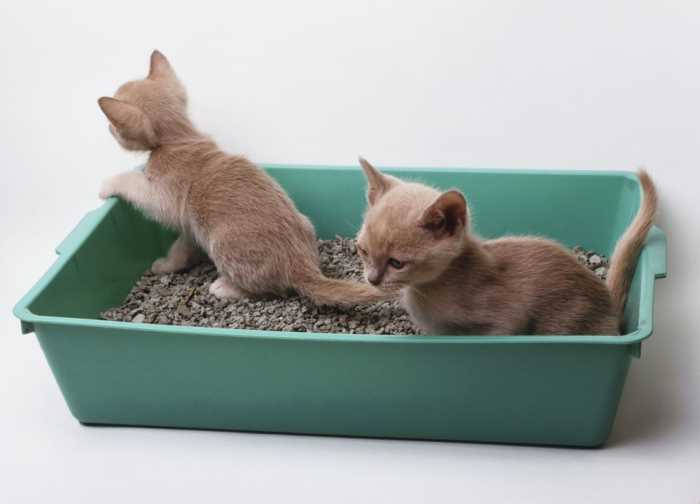
Let's understand a little more about the advantages and disadvantages of temperaments:
- Choleric – Very playful and active, can not notice the urge to urinate and bowel movements. It happens that, after playing, kitten makes a puddle without showing any signs of alarm. This situation indicates that the baby has difficulty switching from one process to another – and this is an obvious "symptom of the choleric.
- Sanguine – Is considered the most balanced type of temperament. Kitten quickly switches from one process to another, that is, he is aware of his urges to urinate and empty the bowels. Naturally, a one-month-old kitten can go to the bathroom in the wrong place regardless of temperament.
- Phlegmatic – is a very interesting temperament that is difficult to understand. Phlegmatics think quickly, but act cautiously. Among phlegmatics there are the most meek and shy animals. A kitten with this temperament can tolerate to the last and not ask to go to the toilet.
- Melancholic – Never in a hurry and does nothing for nothing. Kittens with this temperament rarely show their excitement and worry, but they learn very quickly. Simply put, it will be harder for you to catch the moment when the kitten needs to go to the bathroom…but once you get the hang of it, you won't have any more problems with the litter box.
Kitten not going to the litter box – reasons
If you do not want to face "toilet problems", the litter box for the kitten must be prepared in advance. Use fine sand or sawdust intended for kittens as a filler.
If the kitten does not go to the litter box, rule out the following reasons:
Cats naturally have excellent balance, but instinctively avoid vulnerable positions. If the litter box is not stable, the kitten will feel insecure. In addition, a cat can only balance itself securely in a standing position, and has to squat to go to the toilet.
Please note! A too thick layer of litter gives the kitten a feeling of insecurity, because her paws become too heavy.
There are special litter boxes made for kittens to get used to the litter box, which have an attractive scent and a small particle size. Kitten litter fill particles have no sharp corners, which reduces the discomfort of going to the litter box. Typically, manufacturers offer silicone baby litter fillers that absorb moisture and odor well. Some cat breeds have very sensitive skin and are uncomfortable stepping on even baby litter.
If you notice that the kitten categorically refuses to enter the litter tray after the first visit, the cause is likely to be soreness and discomfort. In this case it is recommended to cover the litter tray with an absorbent diaper.
Low-quality fillings are made from waste construction materials, may have sharp corners and a pungent smell. Keep in mind that your pet's sense of smell is much more sensitive than yours. If you smell sand, it will be distinct and irritating to your kitty. Cats instinctively avoid places with a pungent smell because they associate it with vulnerability.
Cats are naturally clean, which is why they bury their feces in the ground. Generally accepted rules say that adult cats have to clean their litter box once a day. With kittens the situation is a bit more complicated, because they are guided by the smell when looking for the litter box.
How to tell if a cat is sick
During illness, cats hide in quiet places and avoid contact with people and other animals. In the wild, a weakened animal may be driven out of the pride or fall prey to opponents. What behavior indicates that a cat is sick:
If any symptoms occur, you should see a veterinarian for an examination to determine the cause of the ailment. To avoid illness, we recommend that you visit the vet once a year for preventive care.
Kitten wants to pee – how to understand and signs
When a pet comes into the house, how do you know if a kitten wants to pee? It can be recognized by many signs. Cats are very clean animals and this characteristic, given to them by nature, is evident from birth. First the babies are taken care of by their mother, and then the newborns' own instincts take over.
To understand the kitten's desires, he must be watched carefully. Especially when the baby is taken away from his mother and finds himself in a place that is unfamiliar to him. At first he will start to explore the territory thoroughly. The first day he may not pee at all, experiencing stress.
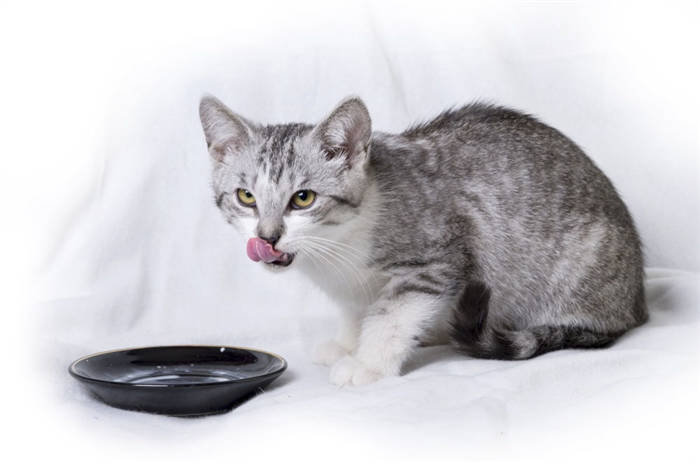
At this point, he is not yet up to choosing the toilet. But when the kitten gets used to it he will choose where to pee. And so that at this point he was alone. So he will try to disappear from sight. Often the main signs of all kittens are common.:
At the moment when kittens want to go to the bathroom, their eyes change. The eyes become as if glassy, very focused. At this moment, the baby does not care about anyone else. He himself concentrates to choose a place for defecation. This is a very important moment for owners, because if you miss it and allow the baby to crap wherever he wants, it will be difficult to correct the situation later.
Even if the kitten has already gone to the litter box once, it will not be able to find it right away. However, if the litter or paper in the litter box is not changed, the kitten will automatically try to find the place by its smell.
You need to pay attention to the kitten after he has eaten. While still a baby sucking on its mother's tit, the animal's instincts are still silent. Hygiene at this time is the responsibility of his mother. However, the reflex is already beginning to form – after eating, he wants to go to the bathroom.
How to know and determine when a cat wants to go to the bathroom?
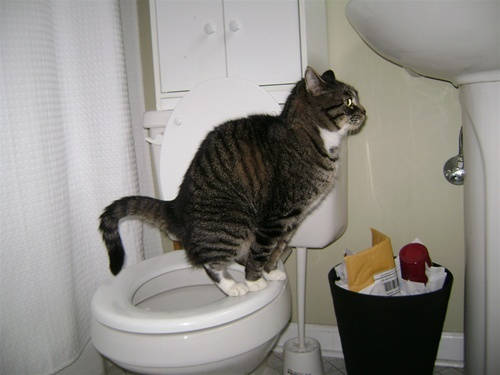
Even small kittens, when they want to go to the bathroom, begin to show their restlessness, squeaking, scratching the floor, looking for a place (if not accustomed, and do not know where to go). How many kittens I had (often my cat gave birth), then watching them, I realized that they would never poop where they sleep. And so it's pretty easy to learn their order from a young age. You have to be patient and poke your nose in the puddle instead of hitting it. My cat used to go outside freely, but if no one was home and no one could open the door for her, she started going to the sink. I didn't like it, so I started putting her on the toilet. And you would not believe – sat down later on her own, just that did not drain. But there are naughty (especially cats). I had one of those. You punish him for something, he takes a shit in his slippers. And so disappeared somewhere. In general, cats are very clean animals by nature, but they are independent and willful. You will find a common language with them, and everything will be fine.
Certain signs
Separation from their mother and moving to a new home is accompanied by great stress. Against the background of intense anxiety and dehydration, the baby may not pee for 4-6 hours in a row. The search for the toilet begins at the stage of exploring the territory.
If the baby is purposefully looking for a latrine, he will try to hide in a secluded corner. Also, a need can catch him right in the middle of play. In both cases, 4 behavioral signs will indicate a urge to urinate or defecate.
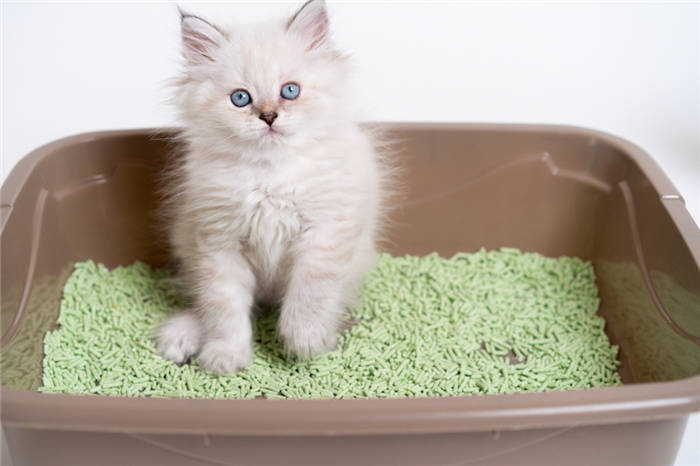
Meowing
The first sign is meowing. Vocalization is a way of getting attention. It is used by kittens who are already accustomed to the litter box. They meow if they can't find the litter box, or if they can't get in because the door is closed.
Take the meowing during urination and defecation seriously. This vocalization is the result of severe pain.
A resounding "meow" also accompanies a request to clean and intense agitation. If the litter box is clean, soon after defecation the furry baby begins to meow loudly and run around the house. This is how he expresses his joy of relief.
Fidgety search for a nook
The second sign is fussiness. A baby who is about to pee will actively sniff and run from corner to corner, trying to find a comfortable, dark and hidden from prying eyes. At this point, he abruptly drops everything he is doing.
The kitten spins around himself
Immediately after finding a secluded place behind the couch or under the bathtub, the fluffy pet begins to twist around itself. In this case, it is recommended to limit access to all narrow holes and openings in advance, and take care of the installation of several trays in different rooms. Over time, they can be replaced by 1 or 2.
Kitten starts scratching with her paws
Another sure sign is scratching the floor. This is how the baby "digs a hole" for its defecation. After stomping on one place, it sits down in a characteristic posture, stumps at one point and freezes for a few seconds. At this point, the pet should be moved to the litter box as soon as possible.
Special time – after sleeping and eating
The kitten, like the baby, can and should be put out. The bladder and bowels are activated after eating and after waking up, so the pet should not be left unattended at this time.
It is not necessary to wait for all the signs listed above to appear. They only serve as a guide. For a faster habituation to the litter tray, follow these tips:
- Gently drop the baby into the tray immediately after bedtime and 5-15 minutes after meals. Make sure he stays close to his litter box until he's done his business.
- Praise him generously for his progress. Don't skimp on praise and affection if you want to see quick results.
- Stick to your feeding schedule and don't overfeed. An overloaded stomach may cause premature emptying.
- Don't skimp on money for litter boxes and diapers. If you can't get to the loo because it's far away, your pet will find a better place to go, and you're not likely to like it.
- Clean the litter box on time. Cats do not like dirt and do not always agree to use dirty litter. Some even separate their litter boxes by type of need.
Do not use strong-smelling disinfectants to clean the cat's "potty". They interfere with the cat's markings.
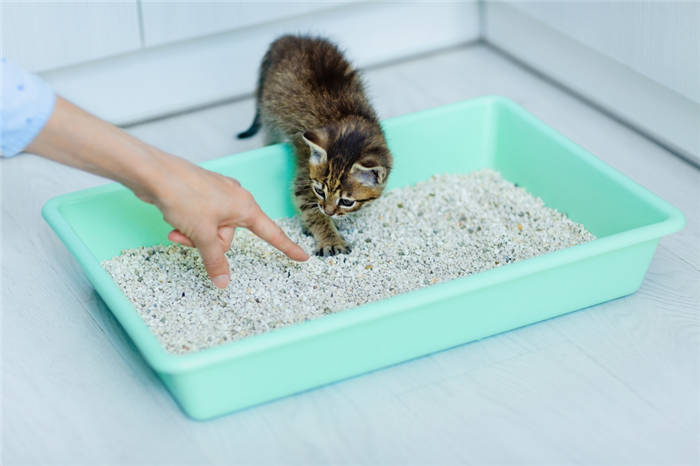
Once you have had the first success, start gently moving the litter boxes toward their rightful place. At the same time, reduce the number of diapers. Eventually there should be 1-2 litter boxes per pet.
When not to worry
Older individuals go to the litter box more times due to weakened muscles of the excretory system. So, if an older cat often pees – it is normal, put her a second litter tray, and the problem will be solved.
There are situations when a cat often pees simply because she drinks a lot. Which can cause a strong thirst:
- The animal ate salty food (which, by the way, is strictly forbidden);
- the cat has switched to dry food – it is logical that he began to drink more;
- it is too hot and dry indoors or outdoors;
- the cat has run and played too much;
- The cat is undergoing treatment, and the prescribed medication is severely dehydrating the body;
- The cat has been without water for a long time and now can't drink enough.
All these situations are not dangerous – once the thirst passes the cat will return to the normal rhythm of going to the toilet. If a cat repeatedly goes to the watering place for no apparent reason it is quite possible that it has diabetes or that it has kidney problems.
And, of course, we should not confuse urination and normal urination. The former have a pungent smell and are created by the cat in a standing position. The latter are accompanied by squatting and do not smell as strongly. An un-neutered cat can urinate at least ten times a day – and it is not considered pathological.
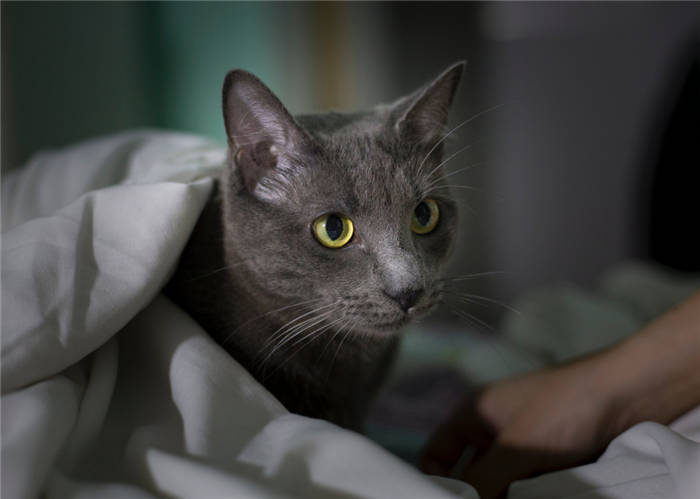
Causes of frequent cat urination
Violations of the internal organs cannot be ignored, because they threaten serious health consequences, and in some cases – death. Pathologies are more common in older individuals, but we cannot rule out the possibility of their development in young cats and kittens.
Cystitis
In cystitis, the mucous membrane of the bladder becomes inflamed, leading to impaired excretory function. The danger of pathology is that the initial stage is almost no manifestations, and the disease passes invisibly to the owner of the animal in an acute or chronic form. The main signs of cystitis are called:
- Frequent urination in small portions, sometimes a drop at a time;
- restless meow when visiting the toilet;
- frequent licking of the perineum;
- A hard hot belly;
- regular vomiting;
- Dark color and pungent odor of urine;
- severe thirst;
- lethargy and fever;
Inadequate water intake and poor quality dry food provoke the development of bladder dysfunction. Another cause of cystitis is hypothermia followed by infection. Less commonly, cystitis can be triggered by helminths.
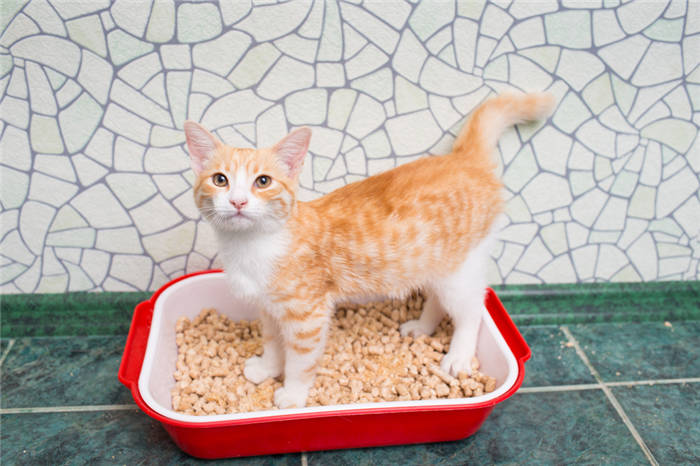
Urolithiasis
Urinary tract disease is characteristic primarily for obese males (this often occurs after castration), as well as aging individuals. Recently, the pathology also affects young animals receiving improper care and poor nutrition. Signs of IBC are:
- Frequent urination little by little;
- Severe pain during the process;
- Progressive vomiting;
- poor appetite;
- Unaccustomed behavior of the pet: trying to hide or all the time walking behind a person;
- high fever;
- dark color of urine with the release of sediment.
How to understand that the kitten is constipated
As a result of constipation, a small kitten may not want to go to the toilet for a long time. Constipation in kittens is a fairly common phenomenon associated with the imperfect development of the digestive system. The resulting disorders lead to intestinal dysfunction and constipation.
In addition, the cause of constipation in kittens can be a stress factor – moving to a new home and weaning from the mother, as well as improper and unbalanced diet.
Pay attention! Constipation is a serious pathology that can cause the development of dangerous complications.
Constipation becomes the main cause of the development of serious abnormalities in the liver and kidney structures. Untimely excreted by the body feces poison the whole body, creating an additional load on the cardiovascular system.
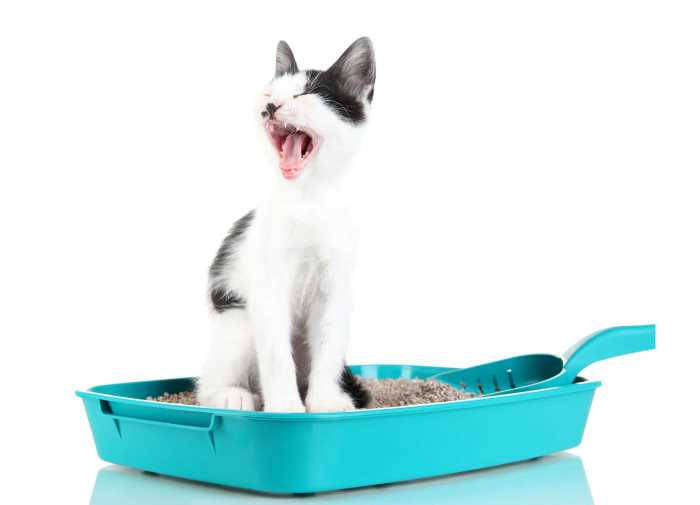
If there is no defecation for 3 days, you should seek help from a veterinarian. This is due to the fact that there is a suspicion of intestinal obstruction, and if not treated promptly and adequately, it may be fatal.
Problems with bowel emptying are indicated by the following symptoms:
- A small kitten begins to scream violently when trying to go to the bathroom;
- the excreted portion of the feces has a dry texture, there may be an admixture of mucus and blood;
- trips to the toilet are frequent and completely non-productive;
- complete absence of desire to eat;
- lethargy and eruption of gastric contents.
Do not self-treat, but better to consult a veterinarian. Requires a comprehensive approach to eliminating constipation in kittens, which includes the use of special drugs, softening stool, taking laxatives and drugs that improve peristalsis of the small and large intestine. An important aspect is the introduction to the diet of special fiber.
Accustoming the kitten to the litter box
Early domestication of the little kitten to the litter box will provide almost immediate positive results. First of all, the owner must determine where the litter box with the cat litter box will stand. It should be a quiet and peaceful place, where household members pass less often, and the litter box should fit the size of the kitten – without high sides. Using special fillers for the cat's litter box will allow the owner to clean it less often and will also eliminate unpleasant odors.
In the first stages of accustoming the kitten to the litter box you need to use clean paper, torn into small shreds. This is due to the fact that the probability of using the litter box for its intended purpose from the first days of stay in the new home is reduced to a minimum.
Need to interest the kitten, and, after all, cats love to play with pieces of paper.
If the baby inexperience went on a little in the middle of the room, you need to blot a puddle of paper towel and put it in the tray. Just because of the smell the kitten will understand where you need to go. But the place on the floor, where the puddle was, should be cleaned as well as possible, removing all the extraneous smell.
As soon as the baby begins to show signs of wanting to go to the toilet – squatting in a characteristic pose, digging and sniffing the corners, you should immediately take him to the litter box. It is not recommended to move away from the litter tray, and as soon as the kitten jumps out of it, return it to its place.
Please note! Always praise your cat and don't scold him if he starts fiddling and playing there instead of going to the toilet.
When cleaning the cat's litter box, you need to remove the dirt, but do not use specific detergents. Otherwise, the little kitten will quickly lose his bearings, and all the work will go to waste.
Do not get upset if the kitten does not go to the litter box from the first days. With proper domestication the cat will go to the litter box after a week or two.






